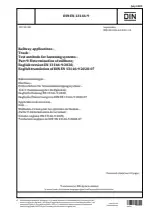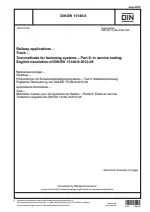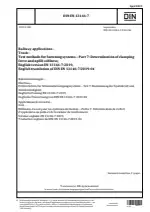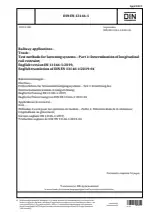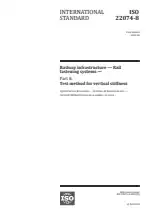Railway Applications - Track - Test Methods for Fastening Systems - Part 9: Determination of Stiffness
Also Known As:
The DIN EN 13146-9 standard provides guidelines for conducting laboratory tests to determine the stiffness of rail pads, baseplate pads, and complete rail fastening assemblies. The standard outlines the procedures to measure both static and dynamic stiffness of these components.
Static stiffness refers to the resistance of the rail pad or fastening assembly to deformation under a constant load over a given period. This test measures the ability of the components to support the rail and maintain its position. Dynamic stiffness, on the other hand, evaluates the response of the components to dynamic forces, such as vibrations or train movement, which can cause changes in the rail alignment.
The standard ensures that the stiffness properties of the rail fastening systems are accurately determined through standardized testing methods. These measurements are essential for assessing the performance and durability of the components in real-world railway applications.
| Descriptors | Capacitive loads, Durability, Dynamic, Dynamics, Fasteners, Fixings, Laboratory testing, Laboratory tests, Measurement, Measuring techniques, Permanent ways, Quality requirements, Rail fastening systems, Railway applications, Railway construction, Railway installations, Railways, Reference methods, Sleepers, Static, Statics, Stiffness, Testing, Tracks (materials handling equipment), Travel ways, Permanency, Pavements (roads), Ties, Sheets, Roadways, Superstructure, Motional |
| ICS Codes | 93.100 - Construction of railways |
| Language(s) | English |
| File Size | 1.4 MB |

